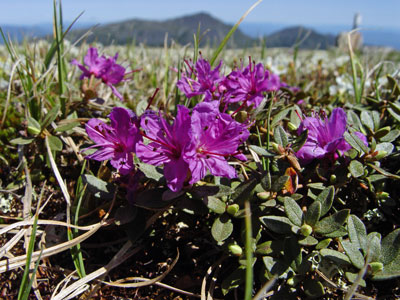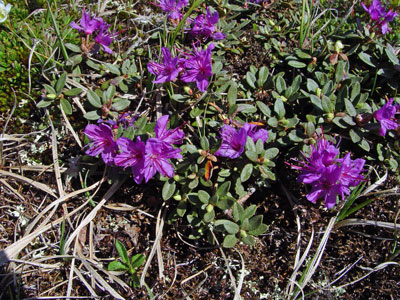DACF Home → Bureaus & Programs → Maine Natural Areas Program → Communities, Plants, and Animals → Rare Plants → Rhododendron lapponicum

Rhododendron lapponicum L.
Lapland Rosebay
- State Rank: S1
- Global Rank: G5
- State Status: Threatened
Habitat: Arctic and subarctic regions, to (often magnesian and calcareous) barrens and cliffs. [Alpine or subalpine (non-forested, upland)]
Range: Circumboreal, south to the higher mountains of New England and New York, and rarely to central Wisconsin.
Aids to Identification: Most Rhododendrons in Maine can be recognized by their showy corollas of fused petals. The corolla is not constricted at the opening, but is bell-shaped or flaring. The flowers have 5-10 stamens and a conspicuous, long style. This dwarf, alpine shrub is easily distinguished from other Rhododendron species by its thick, leathery, evergreen leaves which are only 1-1.5 cm long and covered with small, dot-like scales. The bell-shaped (campanulate) flowers are bright purple and 1.5 cm wide.

Ecological characteristics: In Maine, this species is known to occur only above treeline on Mount Katahdin.
Phenology: Flowers in June.
Family: Ericaceae
Synonyms: Azalea lapponica L.
Known Distribution in Maine: This rare plant has been documented from a total of 1 town(s) in the following county(ies): Piscataquis.
Reason(s) for rarity: Disjunct from principal range.
Conservation considerations: Populations could be threatened by heavy recreational (hiking) use.